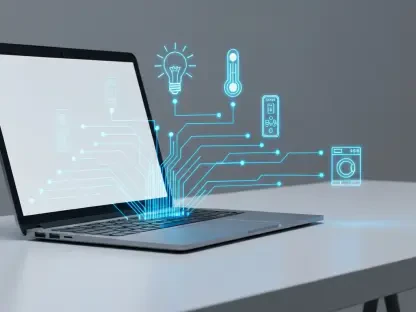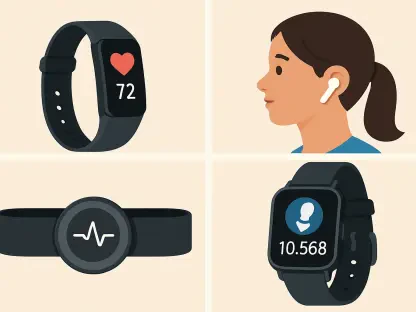In a rapidly evolving era of technology, Nia Christair stands out as a leader in mobile innovations, spearheading advancements in mobile gaming, app development, and enterprise solutions. With more than a decade of experience, she has a keen understanding of mobile infrastructure’s impact on public transportation. Today, she shares insights into the latest expansion of mobile coverage in London’s Tube network, a significant development for commuters and tourists alike.
Can you explain the recent expansion of mobile coverage on the Tube network?
The expansion is a major leap forward for London’s public transportation. This initiative, led by TfL and Boldyn Networks, is making high-speed 4G and 5G mobile coverage available across new sections of the Tube. It allows passengers to stay connected and enjoy faster internet speeds throughout their commutes. It’s a transformative step towards integrating dynamic digital services into daily travel.
Which sections of the Northern line have recently gained mobile coverage?
Several new segments of the Northern line have come online. Most notably, the tunnelled section between Balham and South Wimbledon now offers mobile coverage. Stations including Kennington, Oval, Tooting Broadway, and South Wimbledon have also been upgraded, improving connectivity for commuters in South London.
How has mobile coverage on the Victoria line changed recently?
On the Victoria line, coverage has been extended between Vauxhall and Pimlico, allowing continuous service through that segment. This is particularly valuable as it enhances connectivity across key interchange points and provides a seamless experience for passengers navigating central London.
What benefits does 4G and 5G coverage offer to passengers on the Tube network?
The introduction of 4G and 5G coverage ensures that passengers have access to high-speed internet throughout their journey. It enables everything from simple tasks like messaging to more data-heavy activities like video streaming or business conferencing. It’s about keeping the city’s heartbeat in sync with the global pace of technology.
Could you specify which stations and sections are next in line for mobile coverage expansion?
Next, we’ll see mobile coverage expanding along the Jubilee line, starting at Swiss Cottage and moving toward Westminster. These developments will be complemented by upgrades at major interchange stations such as Green Park and King’s Cross St Pancras, which will be pivotal points of connectivity for commuters.
When is the coverage on the Northern line expected to extend to Morden and Kennington?
The coverage extension to Morden and Kennington is expected to be completed by the end of summer. This will provide uninterrupted connectivity from South Wimbledon all the way to Stockwell, ensuring passengers remain connected throughout their journey.
What is the significance of the Bank branch of the Northern line receiving coverage for the first time?
Receiving coverage on the Bank branch between Euston and Bank represents a groundbreaking achievement for the network. It’s the first time mobile networks will be operational in this section, highlighting our commitment to closing gaps and delivering comprehensive coverage across all lines.
How soon can we expect mobile coverage to begin on the Jubilee line?
The rollout on the Jubilee line will commence in the coming months, with Swiss Cottage slated as the starting point. The effort will gradually connect with the existing service at Westminster, bridging a crucial part of the line and enhancing the travel experience for its users.
How will the coverage expansion at major interchange stations like Green Park and King’s Cross St Pancras benefit commuters?
These upgrades will make significant differences for commuters. The coverage will allow easier transitions between lines and enable passengers to stay informed and manage their connections efficiently. It’s particularly beneficial for those relying on real-time travel apps and updated schedules.
Which mobile network operators are participating in the rollout?
The rollout involves all major operators: Three UK, EE, Vodafone, and Virgin Media O2 (VMO2). This concerted effort underscores a collaborative approach in bringing high-speed connectivity to the city’s entire transport network.
Can you elaborate on how TfL staff will benefit from the increased connectivity?
This increased connectivity boosts TfL staff’s ability to efficiently manage operations. They can communicate in real time, relay important updates, and provide timely service alerts to passengers, reinforcing the safety and reliability of the network.
How will the new Emergency Services Network (ESN) enhance first responders’ capabilities during emergencies?
The ESN provides first responders with rapid access to essential data and images, critically improving situational awareness during emergencies. It ensures they have the tools needed to make quick, informed decisions, which can ultimately save lives.
What steps were taken to ensure mobile coverage doesn’t affect the operation of the Tube network?
Careful testing was conducted to ensure that the introduction of mobile coverage does not impede the Tube’s operations. The focus was on maintaining the integrity of sub-surface lines so that mobile networks could be integrated without disrupting essential services.
How does TfL plan to expand coverage to the Docklands Light Railway (DLR) and Elizabeth line?
The plan involves introducing high-speed mobile coverage across both the DLR and Elizabeth line, incorporating similar strategies used for the Tube. This project is in collaboration with Boldyn Networks to ensure comprehensive, seamless services across lines.
What is the role of Boldyn Networks in the project?
Boldyn Networks has been instrumental in deploying the necessary infrastructure for this expansive mobile network. They provide the technical expertise and innovation needed to navigate the complexities of upgrading a transit system as extensive as London’s, ensuring robust and reliable coverage.
What is your forecast for the future of mobile connectivity in urban transportation?
As cities evolve, we can expect mobile connectivity to become a fundamental component of urban transportation systems worldwide. With ongoing innovations, transport networks will not only keep pace with technological advancements but will start to lead them, offering passengers unprecedented levels of service and connectivity. This will be a key driver for smart city development, enhancing daily commutes and overall city living.









